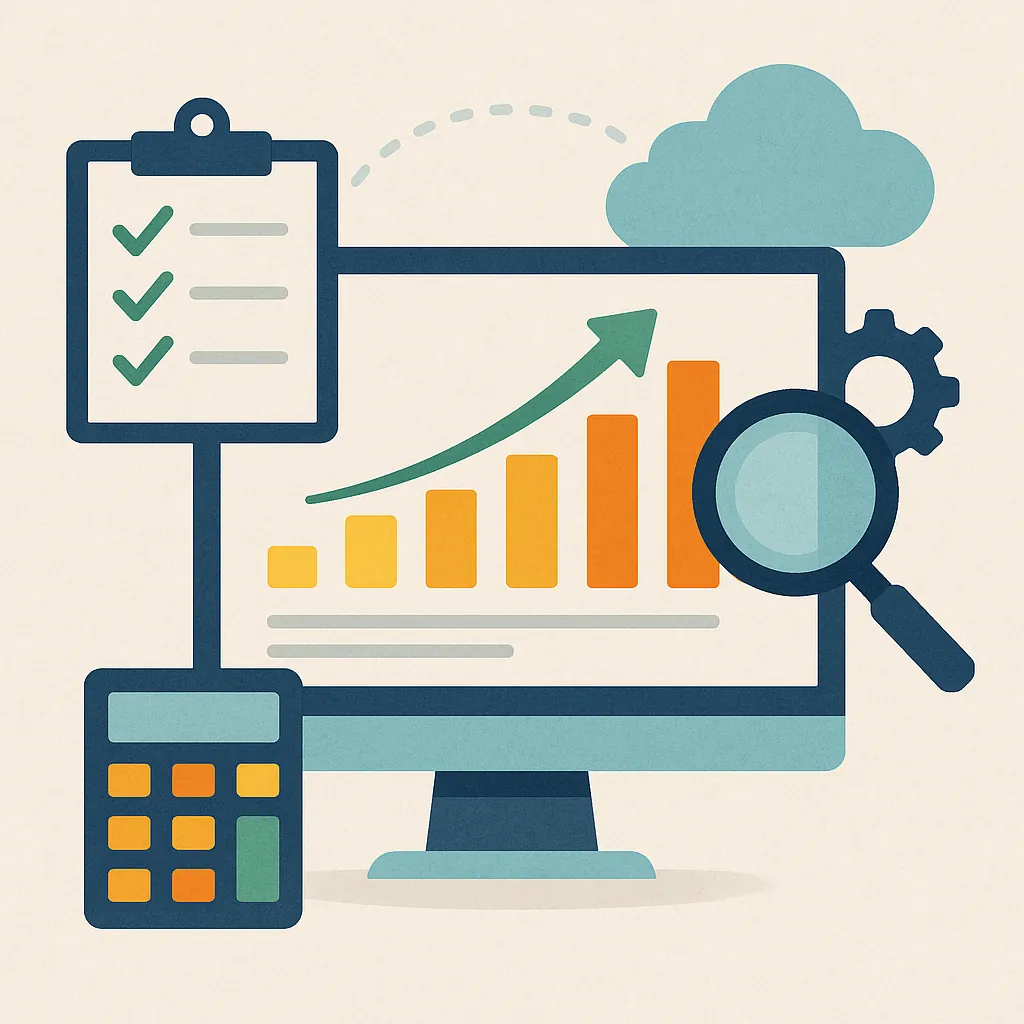Introduction to Bottom-Up Estimating
Bottom-up estimating is a project management technique that involves breaking down a project into its smallest components, such as individual tasks or work packages, and estimating the time, cost, and resources required for each of these elements. This method is particularly valuable for complex projects where precision is critical, as it allows project managers to gain a detailed understanding of all aspects of the project before aggregating these estimates to form a comprehensive overall estimate. The accuracy of bottom-up estimating typically falls within a range of -5% to +10%, making it a reliable approach for forecasting project costs and timelines [1][6].
In contrast to bottom-up estimating, top-down estimating takes a broader approach by starting with an overall project estimate and then breaking it down into smaller components. While top-down estimating can be quicker and easier, it often lacks the granularity and accuracy that bottom-up estimating provides. This distinction is crucial for project managers, as the choice of estimating technique can significantly impact the project’s success. Bottom-up estimating ensures that all details are considered, which can lead to more informed decision-making and better resource allocation [3][11].
Accurate project estimates are essential for several reasons:
- Resource Management: Precise estimates help in allocating the right resources at the right time, minimizing waste and ensuring that team members are utilized effectively [8].
- Risk Mitigation: By understanding the detailed requirements of each task, project managers can identify potential risks early in the project lifecycle, allowing for proactive management strategies [7][9].
- Stakeholder Confidence: Accurate estimates foster trust among stakeholders, as they demonstrate a thorough understanding of the project scope and requirements, which can lead to better support and collaboration [10].
The Challenges of Traditional Bottom-Up Estimation
Bottom-up estimating is a widely used technique in project management that involves breaking down a project into smaller, manageable components and estimating each element individually. While this method can yield highly accurate results, it is not without its challenges, particularly when relying on traditional approaches. Here are some common pitfalls and challenges faced in traditional bottom-up estimation methods:
- Time-Consuming Aspects of Manual Estimation: Traditional bottom-up estimation often requires extensive manual input, which can be a significant drain on time and resources. Project managers and team members must meticulously list all tasks and activities, estimate their durations and costs, and then aggregate these estimates to form a comprehensive project estimate. This process can be labor-intensive, especially for complex projects with numerous components, leading to delays in project planning and execution [1][5].
- Potential for Human Error and Bias: Manual estimation is inherently prone to human error. Team members may overlook critical tasks or misjudge the time and resources required for specific activities. Additionally, biases can influence estimates, as individuals may rely on past experiences or personal judgments rather than objective data. This can result in inflated or deflated estimates, ultimately affecting the project’s budget and timeline [2][12].
- Difficulties in Collaboration Among Team Members: Effective bottom-up estimation relies on collaboration among team members to ensure that all aspects of the project are considered. However, traditional methods can create silos, where individuals work independently on their estimates without sufficient communication. This lack of collaboration can lead to inconsistencies in estimates, as different team members may have varying interpretations of project requirements or scope. Furthermore, coordinating input from multiple stakeholders can be challenging, particularly in larger teams or organizations [8][14].
The Role of Technology in Enhancing Estimation Accuracy
The accuracy of cost and duration estimates is paramount for successful project execution. Bottom-up estimating, a detailed approach that breaks down projects into smaller components for individual estimation, benefits significantly from advancements in technology. This section explores how software tools enhance the accuracy of bottom-up estimates, focusing on data collection, analysis, and team collaboration.
Introduction to Software Tools for Project Estimation
Modern project management software has revolutionized the way estimates are generated. Tools specifically designed for project estimation allow users to create detailed and accurate bottom-up estimates by:
- Creating Work Breakdown Structures (WBS): These tools enable project managers to decompose projects into manageable tasks, ensuring that every component is accounted for in the estimation process. This structured approach leads to more precise estimates, as each task can be evaluated based on its specific requirements and complexities [4][3].
- Utilizing Estimation Templates: Many software solutions offer pre-built templates that streamline the estimation process, allowing teams to leverage historical data and best practices, which can enhance the accuracy of new estimates [9].
Technology Aiding Data Collection and Analysis
The integration of technology in project estimation significantly improves data collection and analysis, which are critical for accurate bottom-up estimates. Key benefits include:
- Real-Time Data Access: Software tools provide access to real-time data, enabling project managers to make informed decisions based on the latest information. This immediacy helps in adjusting estimates as project parameters change [5][10].
- Advanced Analytical Features: Many project management tools incorporate advanced analytics that can process large volumes of data to identify trends and patterns. This capability allows for more accurate forecasting and risk assessment, which are essential for reliable bottom-up estimates [6][11].
Facilitating Collaboration and Communication
Effective collaboration and communication among team members are crucial for the success of bottom-up estimating. Technology plays a vital role in fostering these elements:
- Centralized Communication Platforms: Project management software often includes features that facilitate communication among team members, ensuring that everyone is on the same page regarding project requirements and expectations. This reduces the likelihood of miscommunication, which can lead to inaccurate estimates [9][14].
- Collaborative Estimation Processes: Many tools allow for collaborative input from various team members, enabling diverse perspectives and expertise to inform the estimation process. This collective approach not only enhances the accuracy of estimates but also promotes team buy-in and accountability [10][12].
Key Features of Estimation Software
Bottom-up estimating is recognized for its accuracy and reliability. To further enhance this method, leveraging technology through specialized estimation software can significantly improve the precision of project estimates. Here are some essential features that such software should offer to optimize bottom-up estimating:
- Automated Time Tracking and Resource Allocation: One of the primary advantages of using estimation software is its ability to automate time tracking and resource allocation. This feature ensures that project managers can accurately monitor the time spent on individual tasks and allocate resources effectively. By capturing real-time data, teams can make informed decisions that reflect actual project progress, leading to more precise estimates and adjustments as needed [1][6].
- Integration Capabilities with Other Project Management Tools: Effective bottom-up estimating requires seamless communication between various project management phases. Software that integrates well with other tools—such as scheduling, budgeting, and reporting applications—enables a holistic view of the project. This integration allows for the aggregation of estimates from different components, ensuring that all aspects of the project are considered and that the estimates are comprehensive and accurate [12][14].
- Data Visualization Tools for Better Understanding of Estimates: Visualization tools play a crucial role in enhancing the clarity of estimates. By presenting data in graphical formats, such as charts and graphs, project managers can easily interpret complex information. This feature aids in identifying trends, potential bottlenecks, and areas that require attention, ultimately leading to more informed decision-making and improved accuracy in estimates [1][11].
- Scenario Analysis Features to Assess Different Project Outcomes: The ability to conduct scenario analysis is vital for understanding the potential impacts of various project decisions. Estimation software that includes this feature allows project managers to simulate different scenarios and assess their outcomes. This capability helps in evaluating risks and uncertainties, enabling teams to prepare for various possibilities and refine their estimates accordingly [10][11].
Best Practices for Using Estimation Software
Bottom-up estimating is a crucial technique that can significantly enhance the accuracy of project cost and duration estimates. Leveraging technology, particularly estimation software, can further refine this process. Here are some best practices for maximizing the effectiveness of estimation tools:
- Encourage Training and Onboarding: It is essential to provide comprehensive training for team members on how to effectively use estimation software. Familiarity with the tool’s features and functionalities can lead to more accurate estimates. Training sessions should cover not only the technical aspects of the software but also the principles of bottom-up estimating, ensuring that all team members understand how to break down tasks and input data correctly. This foundational knowledge can significantly improve the quality of estimates generated by the software [6][10].
- Advocate for Regular Updates to Project Data and Estimates: To maintain the accuracy of estimates, it is vital to regularly update project data and estimates within the software. As projects evolve, new information about task durations, resource availability, and costs may emerge. By keeping the software updated with the latest data, teams can ensure that their estimates reflect the current project landscape, reducing the risk of discrepancies and enhancing overall project planning [2][12].
- Suggest Collaborative Practices for Teams: Collaboration among team members is key to enhancing the accuracy of bottom-up estimates. Utilizing estimation software that supports collaborative features can facilitate discussions and input from various stakeholders. Encouraging team members to contribute their insights and expertise during the estimation process can lead to more comprehensive and realistic estimates. This collaborative approach not only improves accuracy but also fosters a sense of ownership and accountability among team members [5][15].
By implementing these best practices, project management teams can leverage technology to enhance the accuracy of their bottom-up estimates, ultimately leading to more successful project outcomes.
Future Trends in Estimation Technology
The accuracy of estimates is paramount for successful project execution. As we look to the future, several technological advancements are poised to significantly enhance bottom-up estimating processes. Here are some key trends to consider:
Advancements in AI and Machine Learning
- Enhanced Predictive Analytics: The integration of artificial intelligence (AI) and machine learning algorithms is expected to revolutionize project estimation. These technologies can analyze historical project data to identify patterns and predict future outcomes with greater accuracy. By leveraging AI, project managers can refine their estimates based on real-time data, leading to more informed decision-making and resource allocation [6][7].
- Automated Estimation Tools: AI-powered cost estimating tools are likely to become more sophisticated, automating complex calculations and integrating seamlessly with project management software. This will not only speed up the estimation process but also reduce human error, ensuring that estimates are both precise and reliable [5][6].
Impact of Big Data on Estimation Accuracy
- Data-Driven Insights: The proliferation of big data will play a crucial role in enhancing the accuracy of project estimates. By harnessing vast amounts of data from various sources, project managers can gain deeper insights into project variables, such as costs, timelines, and resource availability. This data-driven approach allows for more granular analysis and better forecasting, ultimately leading to improved project outcomes [3][4].
- Real-Time Data Utilization: As organizations increasingly adopt big data analytics, the ability to utilize real-time data for project estimation will become a game-changer. This will enable project teams to adjust their estimates dynamically based on current project conditions, thereby enhancing responsiveness and flexibility in project management [3][4].
Emerging Technologies and Their Impact
- Integration of BIM and Estimation Software: The use of Building Information Modeling (BIM) in conjunction with specialized cost estimation software is expected to grow. This integration will allow for more accurate cost assessments by visualizing project components in a 3D environment, facilitating better communication among stakeholders and reducing discrepancies in estimates [5][10].
- Collaboration Tools and Cloud Computing: The rise of collaborative project management tools and cloud-based platforms will enhance communication and data sharing among project teams. This will lead to more collaborative bottom-up estimating processes, where team members can contribute their expertise and insights, resulting in more comprehensive and accurate estimates [9][10].
- Blockchain for Transparency: The adoption of blockchain technology may also influence project estimation by providing a transparent and immutable record of project data. This could enhance trust among stakeholders and ensure that all parties have access to the same information, thereby reducing disputes and improving the accuracy of estimates [3][4].
Conclusion
The accuracy of bottom-up estimating is paramount for successful project execution. Leveraging advanced software tools significantly enhances the precision of these estimates, allowing project managers to break down tasks into manageable components and assess costs and timelines with greater reliability. The benefits of utilizing technology in this context include:
- Increased Accuracy: Software tools facilitate detailed analysis of each task and sub-task, leading to more accurate project estimates. This method reduces the risk of underestimating or overestimating project requirements, which can have serious implications for project success [5][10].
- Enhanced Efficiency: By automating calculations and providing templates for estimation, technology streamlines the estimating process. This efficiency allows project managers to focus on strategic planning and execution rather than getting bogged down in manual calculations [12][14].
- Improved Collaboration: Many project management software solutions offer collaborative features that enable team members to contribute their insights and expertise during the estimating phase. This collective input can lead to more comprehensive and realistic estimates [7][10].
As project managers navigate increasingly complex projects, it is essential to embrace technology as a means to improve estimating accuracy and overall project outcomes. By adopting innovative software tools, project managers can not only enhance their estimating processes but also drive better results for their projects.
For developers in the project management software space, there is a significant opportunity to innovate and create solutions that further enhance the bottom-up estimating process. By focusing on user-friendly interfaces, integration capabilities, and advanced analytics, developers can empower project managers to achieve greater accuracy and efficiency in their estimations. The future of project management lies in the synergy between technology and effective estimating practices, and it is crucial for both users and developers to collaborate in this evolving landscape.
Find out more about Shaun Stoltz https://www.shaunstoltz.com/about/.
This post was written by an AI and reviewed/edited by a human.



